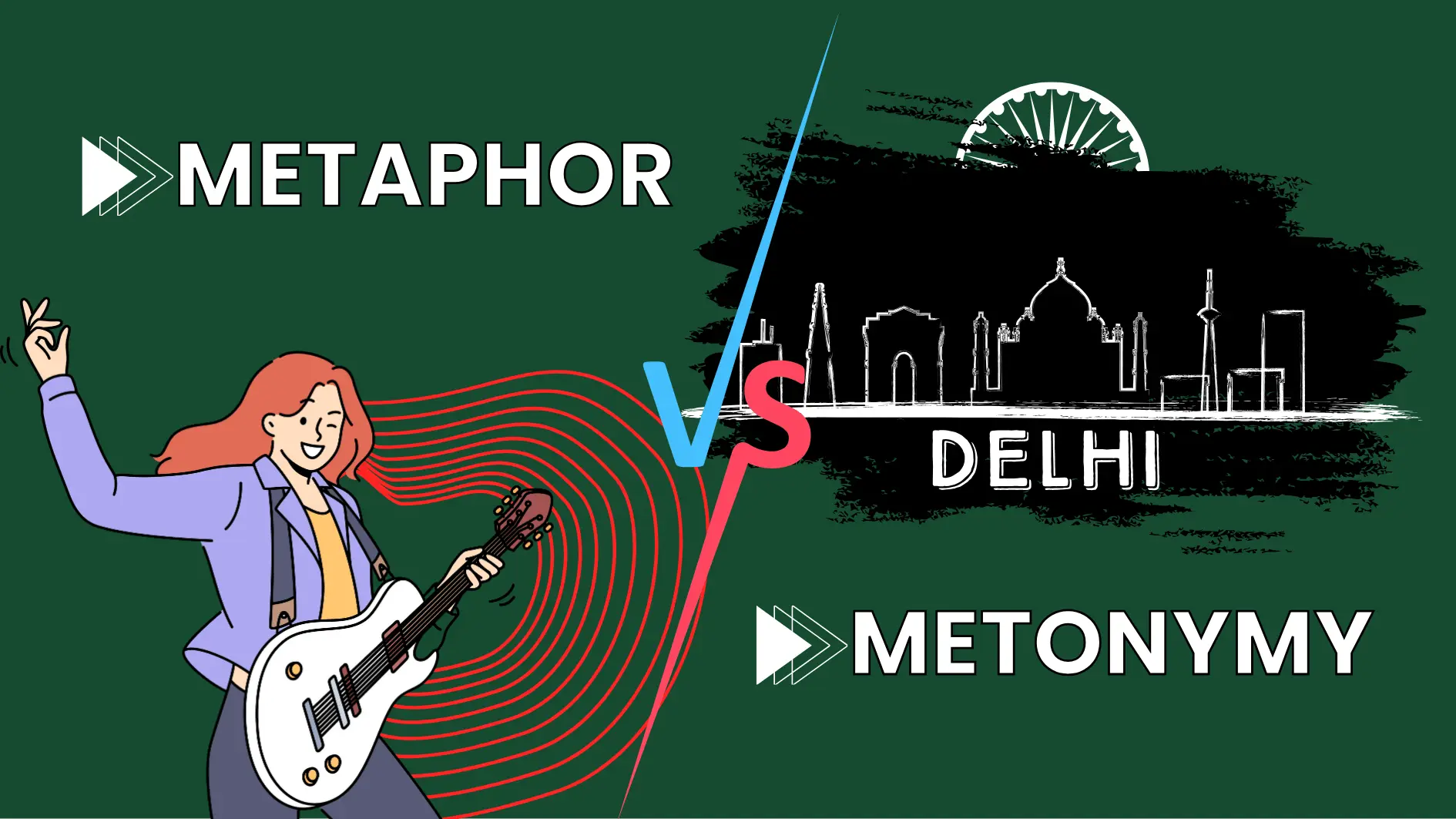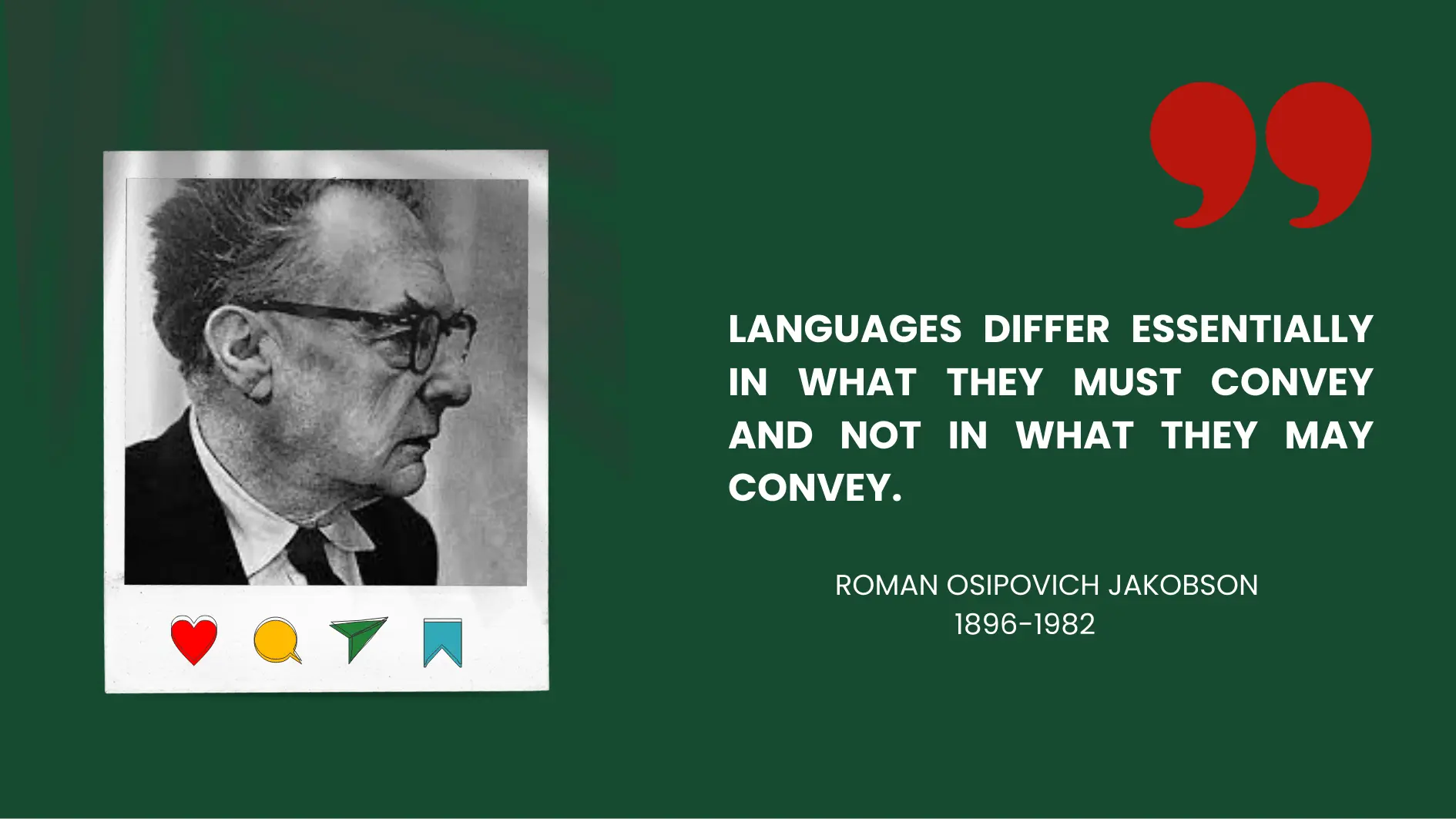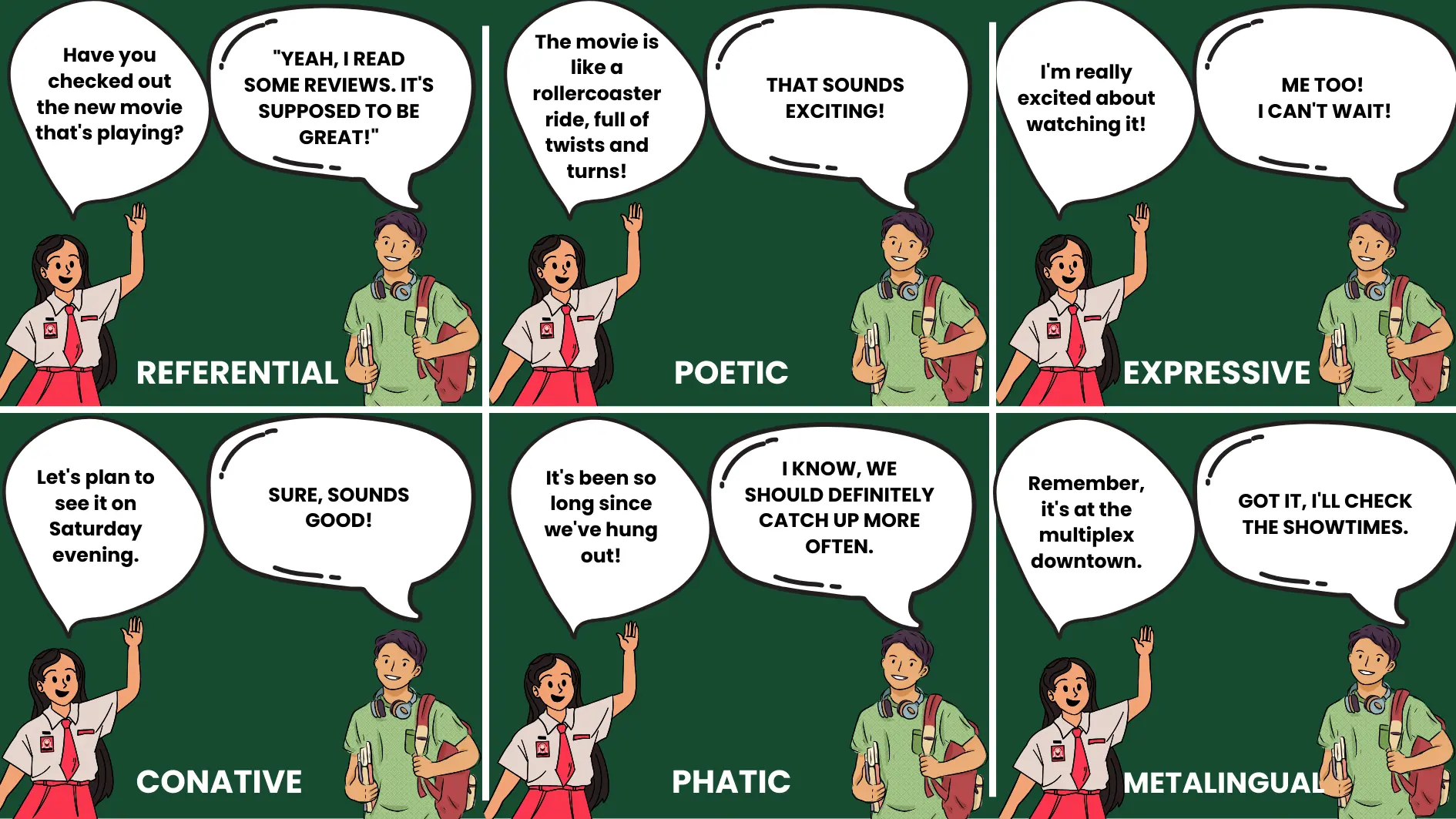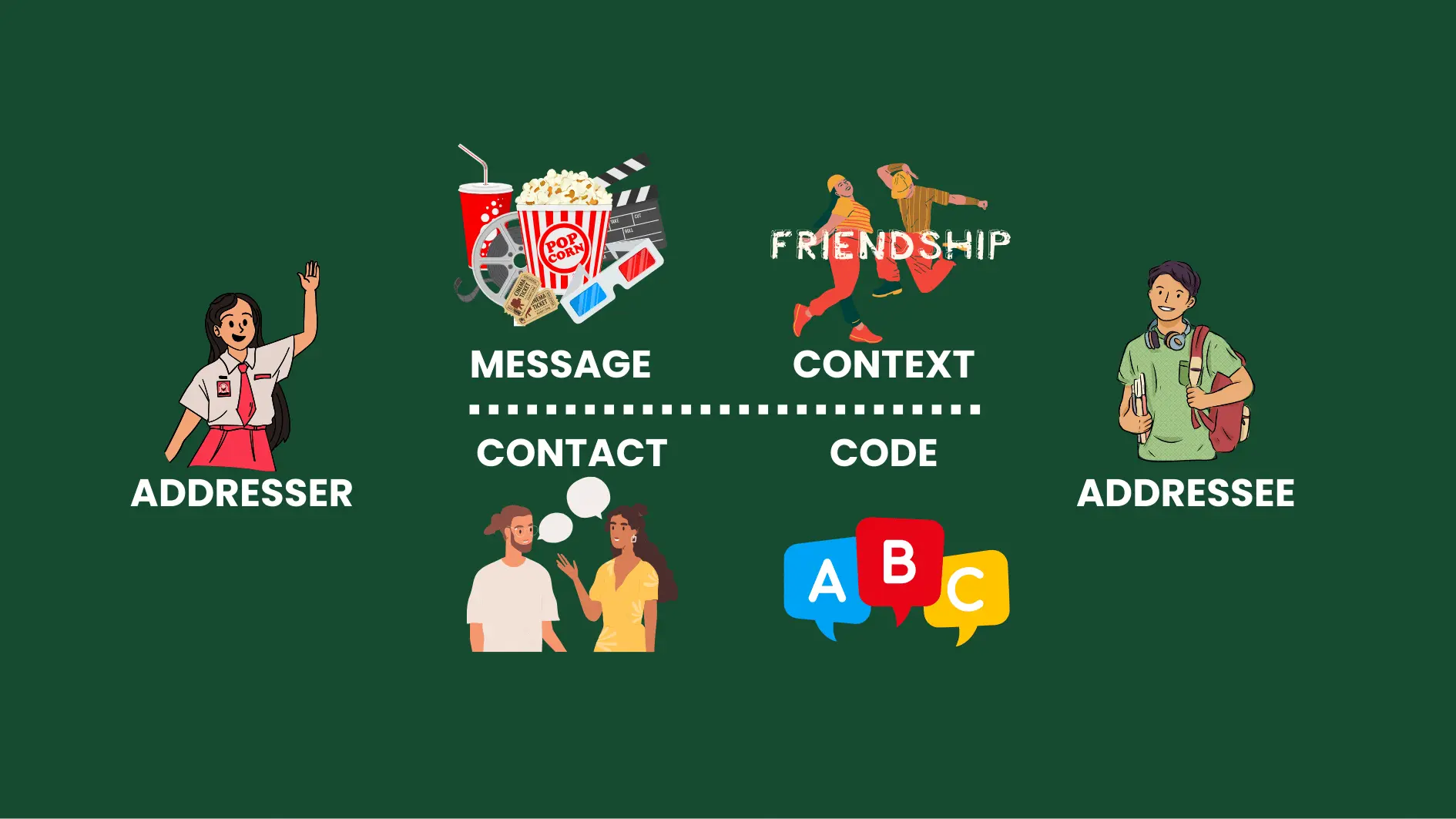Roman Jakobson, a famous linguist, studied important parts of how we use language. He focused on two big ideas: metaphor and metonymy. These ideas are like building blocks in how we understand and talk about things. Metaphor helps us compare things in a way that makes sense, while metonymy helps us use one thing to stand for another.

Think of these as two sides of the same coin, both helping us understand the world around us. Ever heard someone say, “Her voice is a melody”? That’s a metaphor. It draws a comparison between two seemingly different things (voice and music) based on their shared quality of being beautiful. Now, imagine reading a headline that says, “Delhi condemned the attack.” Here, “Delhi” represents the Indian government – it is metonymy. We use a part to represent the whole, making our communication more compact and efficient.
In this blog, we’ll look at these ideas in simple ways, exploring what Jakobson said about them and why they matter in our everyday conversations.
Table of Contents
Understanding Metaphor and Metonymy in Detail
| Definition of Metaphor and Metonymy | |
| Metaphor | Metonymy |
| A metaphor is a figure of speech where a word or phrase is applied to something else, suggesting a resemblance or analogy. It helps in explaining an idea by directly comparing it to something else, even though they are not the same. | Metonymy involves substituting the name of one thing with the name of something else that is closely associated with it. It’s like using a related term to represent the actual thing being referred to. |
| Examples of Metaphor and Metonymy | |
| Metaphor | Metonymy |
| For instance, phrases like “time is a thief” or “he has a heart of stone” are metaphors, where time is not literally a thief, and the person doesn’t actually have a stone heart. They are comparisons that help express a deeper meaning. | When we say “the White House issued a statement,” we’re using the term “White House” to refer to the U.S. government because the White House is closely associated with the government’s activities. |
| Purpose and Function of Metaphor and Metonymy | |
| Metaphor | Metonymy |
| Metaphor helps us understand and communicate abstract or complex ideas by likening them to something more familiar. It makes language vivid and imaginative. | Metonymy, on the other hand, simplifies language by using related terms, making it more efficient and expressive in communication. |
Who was Roman Jakobson?

Roman Jakobson was a pioneering linguist, born in Russia in 1896, and known for his significant contributions to structural linguistics and semiotics. He played a crucial role in the development of linguistic theory during the 20th century. Jakobson’s work covered various aspects of language, focusing on phonology, morphology, syntax, and semantics.
One of the notable aspects of Jakobson’s work was his investigation into the functions of language and the various elements involved in communication. He introduced the concept of the six functions of language: referential, poetic, expressive, conative, phatic, and metalingual. His model emphasized the multifaceted nature of language, considering how communication serves different purposes beyond conveying information.
The discussion about Jakobson’s Communication Model stemmed from his broader theoretical framework that emphasized the complex dynamics involved in communication. His model focused on elements such as the sender (Addresser), receiver (Addressee), message, context, channel, and code, highlighting their roles in the communication process. This model served as a foundation for understanding how messages are constructed, transmitted, and interpreted in various contexts.
💡Jakobson's ideas and models have been influential across multiple disciplines, including linguistics, semiotics, anthropology, and literary theory, shaping our understanding of language and communication in diverse social and cultural contexts. The discussion about Jakobson's Communication Model emerged from his extensive research and contributions to the field of linguistics, offering valuable insights into the intricacies of human communication.
Understanding Six Functions of Language Along with Communication Model
Let’s consider a simple conversation between two friends, Sarah and John, discussing their weekend plans:

1. Referential Function:
Sarah: “Have you checked out the new movie that’s playing?”
John: “Yeah, I read some reviews. It’s supposed to be great!”
Here, the referential function is evident as the conversation refers to something external – the new movie – sharing information about it.
2. Poetic Function:
Sarah: “The movie is like a rollercoaster ride, full of twists and turns!”
John: “That sounds exciting!”
The poetic function focuses on the aesthetic and expressive qualities of language. Sarah uses a metaphor (rollercoaster ride) to vividly describe the movie, adding a poetic flair to the conversation.
3. Expressive Function:
Sarah: “I’m really excited about watching it!”
John: “Me too! I can’t wait!”
The expressive function is seen in the expression of emotions and personal feelings. Both Sarah and John express their excitement about the movie.
4. Conative Function:
Sarah: “Let’s plan to see it on Saturday evening.”
John: “Sure, sounds good!”
The conative function aims at influencing the behaviour of the listener. Sarah suggests a plan for watching the movie, seeking John’s agreement.
5. Phatic Function:
Sarah: “It’s been so long since we’ve hung out!”
John: “I know, we should definitely catch up more often.”
The phatic function focuses on social interaction and maintaining communication. Sarah and John exchange small talk, reinforcing their friendship.
6. Metalingual Function:
Sarah: “Remember, it’s at the multiplex downtown.”
John: “Got it, I’ll check the showtimes.”
The metalingual function involves discussing the language itself. Here, they clarify information about the movie’s location, ensuring mutual understanding.
Jakobson’s Communication Model can be observed in this conversation:

– Addresser (Sarah) formulates the message (about the movie) based on her intentions.
– Addressee (John) receives and interprets the message, responding accordingly.
– Message (content about the movie and their plans) is conveyed.
– Context (their friendship, plans for the weekend) influences the conversation.
– Contact (the communication channel – verbal conversation) is established.
– Code (shared language and understanding of movie-related terms) is used for communication.
This example illustrates how Jakobson’s Communication Model operates in everyday conversations while showcasing the various functions of language at play in human communication.
Relationship Between Metaphor, Metonymy, and Communication Model
Metaphor, metonymy, and Jakobson’s Communication Model are like puzzle pieces that fit together, enhancing how we understand and convey messages in everyday conversations.

Metaphor and Metonymy within the Communication Model
Sarah’s metaphor about the movie being “like a rollercoaster ride” is an example of metaphor within Jakobson’s Communication Model. It helps in expressing a vivid image, enriching the Message component of their conversation.
Meanwhile, when Sarah mentions “the multiplex downtown” to refer to the movie theatre, she’s using metonymy. It’s substituting one term (the theatre’s location) for another closely related one within their shared understanding.
Functionality within Communication
Sarah’s metaphor and metonymy serves the function of enhancing the content of their conversation within Jakobson’s Communication Model. They add colour and clarity to her message about the movie and their plans.
These linguistic tools also serve to evoke specific thoughts or emotions in John’s mind, influencing how he interprets Sarah’s excitement about the movie.
Complementary Roles
In their conversation, Sarah’s metaphor (“rollercoaster ride”) and metonymy (“multiplex downtown”) complement each other. The metaphor creates a vivid image, while the metonymy specifies the location, enriching their discussion.
Just like puzzle pieces fitting together, metaphor and metonymy work hand-in-hand to provide a detailed and colourful picture of the message Sarah is conveying about the movie and their plans.
Integration within the Communication Process
John’s understanding of Sarah’s metaphor and metonymy enriches his decoding process within the Communication Model. Recognizing these linguistic devices helps him grasp the vivid descriptions and specific references Sarah is using.
The integration of metaphor, metonymy, and the Communication Model in Sarah and John’s conversation showcases how these elements work together seamlessly, making their communication clearer and more engaging.
💡The example of Sarah and John illustrates how metaphor and metonymy fit within Jakobson's Communication Model, highlighting their roles in adding depth, clarity, and vividness to everyday conversations.
Key Takeaways
Metaphor and metonymy by Roman Jakobson, help us talk in more interesting ways by creating pictures in our minds and linking different ideas together. Jakobson’s Communication Model gives us a structured way to understand how messages are sent and received, involving things like who sends the message, who gets it, what’s said, where it’s said, how it’s said, and the rules used. It’s important to explore and use these ideas in school studies and everyday talks. Doing this helps us explain complicated thoughts better, understand tricky messages, and make our chats clearer and more fun for everyone involved.
